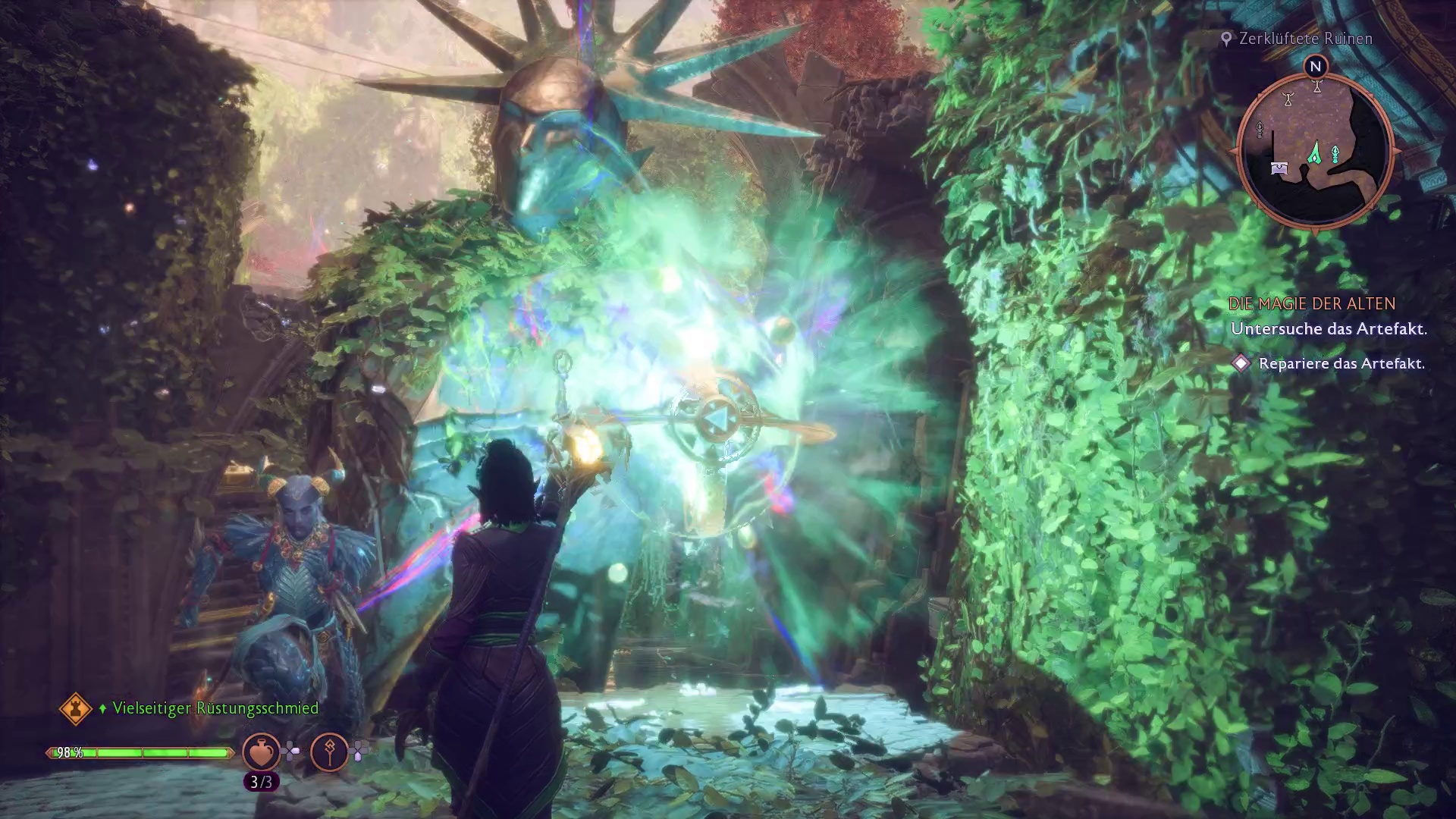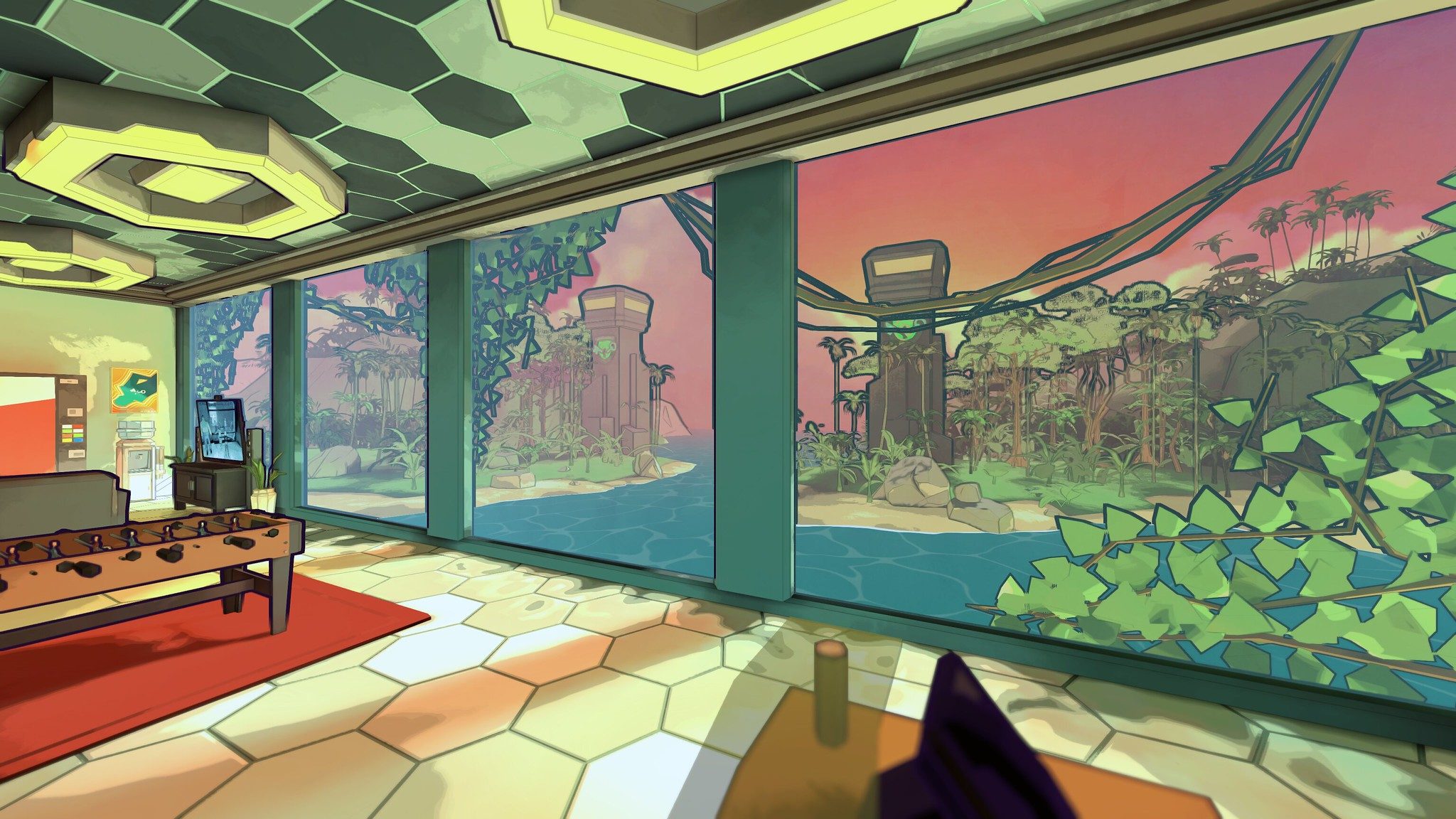The video game industry’s most famous hedgehog returns in 2022 with a new concept for the franchise. With Sonic Frontiers, SEGA’s mascot is abandoning its historical formula for an open-world experience for a while. Does this adventure game mark the revival of the saga?
An interdimensional story
Sonic Frontiers doesn’t start with Sonic, but with Doctor Ivo Robotnik aka Eggman knowingly activating a very advanced ancestral technology with the direct result of him being trapped in a cyber dimension. At the same time, Sonic, Miles “Tails” Prower and Amy Rose, all aboard their iconic red biplane, are sucked into a strange interdimensional portal. After this incident, Sonic, who appears to be the only one who escaped unscathed, investigates his friends to find the veil of mysteries surrounding the island he is on.
The story of Frontiers is certainly fascinating at first glance with its very strong “science fiction” approach, but becomes secondary after several hours of play. The scenario is gradually revealed, one revelation after the other and therefore one cinematic after the other, which unfortunately makes the whole thing too mechanical and predictable. The interpretation of the different characters is also not very convincing, especially in the French version, which prevents you from fully exploiting the very childish story. Indeed, the tone used throughout the adventure reflects the intensity of the experience the Sonic team envisioned.
However, The Sonic Frontiers soundtrack rocks and perfectly underlines the different game sequences, just knowing how to accompany the exploration with a soft melody before passing the second during the fights over riffs that electrify the atmosphere. It is simply pleasant to listen and be lulled by the musical atmospheres composed by SEGA’s artists. A soundtrack to salute and above all to honor the studios.

An open world to explore
For the first time in its long history, the Sonic saga takes an interest in open worlds with everything that this sensible choice in terms of structure and gameplay implies. SEGA has accustomed us to linear adventures made up of consecutive levels for three decades. In Sonic Frontiers, the anthropomorphic hedgehog faces a daunting challenge: traversing the vast expanses of an open world while preserving what defines it.namely speed and platform.
Before even approaching the world of Frontiers, a little precision is essential. This adventure game is actually divided into five islands (Ares, Chaos, Kronos, Ouranos and Rhea) that sort of form an archipelago with different biomes. Depending on the map, Sonic crosses plains, forests, a desert or even a volcano. So Sonic Frontiers is by definition not an open world, but that doesn’t detract from the fun of discovery. Exploring the different islands is pleasant, especially since the developers have managed to integrate the notion of platform into the environments, giving the impression of playing a Sonic game despite the opening up of the world undertaken by the studios.
However, after several hours of playing and exploring the islands, a sense of repetition slowly but surely creeps into the experience. The flaw lies in an adventure linked to the collection of essential objects to advance in the story (souvenir tokens, mechanisms, portal keys, emeralds, etc.) and a recognition of the islands that involves solving puzzles and succeeding challenges are connected. You don’t have to walk with the wind in Sonic Frontiers. Indeed, wandering at will doesn’t reveal the different segments of the islands, much less their points of interest… which goes against the very principle of the open world.

Then Frontiers pushes players to make multiple round trips to the islands, artificially increasing the lifespan. Sonic’s friends literally teleport from one point to another on the map, forcing the hedgehog to travel miles with the sole aim of triggering the next objectives, which are copied and pasted from one island to another as a reminder (except for the fourth one) . However, the portals constructed in the open world provide access to 2D-3D levels inspired by the Blue Hedgehog’s previous adventures (found entirely in Arcade mode). These “old fashioned” stages are a real breath of fresh air, proving that Sonic never whirls like he does in a 100% controlled environment.
In terms of graphics, the title developed by the Sonic Team blows hot and cold. The artistic direction easily transitions from one style to another. This creates a sometimes visual dissonance between the cartoon of the characters, the “realism” of the environments, and the techno-futuristic approach. However, only the open world suffers. In fact, the 2D-3D layers maintain a consistent DA from end to end. Finally, Frontiers technically doesn’t sparkle. The experience is intended to be fluid, which is a prerequisite for fully enjoying a Sonic game, but it suffers above all from pronounced clipping, namely the unwanted appearance or disappearance of elements in the players’ field of view.

An archipelago to liberate
We’ve already mentioned the excellent integration of platform elements into the open world, and the same goes for the fights, not that many but both approachable and edgy. To simplify confrontations and compensate for the wandering of a camera that gets too often in trouble, Sonic can also count on his remote attack during the platforming phases to move from one enemy to another with insane ease. . In addition, the bestiary proves to be varied and becomes more and more devious, especially with the Guardians, mini-bosses with particularly hard specific patterns.
Boss fights bring the notion of epic to the climax! During these duels, where only time equals defeat, our hero in his super form faces gigantic beings. And for good reason, Super Sonic can’t die decently, instead consuming rings to maintain such a level of power. Like a countdown, the number of rings decreases and eventually reaches zero, which is equivalent to Game Over. Oh, These highly cinematic, fast-paced sequences suffer from the same camera issue who sometimes struggles to follow the plot. The “role-playing” component of Sonic Frontiers can also provide unpleasant surprises.
Adding RPG mechanics to action-adventure games has become one of the video game industry’s passions, and Sonic Frontiers is no exception to the rule. SEGA’s Supersonic Hedgehog can rely on a talent tree to unlock new abilities, mainly attacks that diversify combos. It is also recommended to collect as many seeds as possible and find kocos lost on the islands to increase the attack, defense, speed and finally the ability to wear rings of the main character. While on paper the increase in immersion by putting Sonic’s destiny in the hands of players is commendable, in practice it proves clunky and somewhat awkward.

Conclusion
Points cont
- A science fiction story
- A quality soundtrack
- An open world platformer
- An accessible and edgy combat system
- Titanic boss encounters
- 2D-3D planes (or “digital dimensions”)
- arcade mode
weak points
- A predictable story
- A Perfectable Technique (Clipping)
- The camera in trouble
- The repeatability of the goals and the adventure
- Dissonant cartoon-realistic graphics
- A clunky RPG overlay
Sonic Frontiers dares to think outside the box of the franchise, and dares… he dares. Transforming a historically linear formula into an open world isn’t easy, and the Sonic team reneges on avoiding all the pitfalls that such a change entails, starting with replaying the adventure, a perfectable technique, and a troubled camera . However, this new Sonic experience brings a fresh take on the saga with its titanic combat, open-world “platformer” approach, and desire to push your own limits, even if it means losing control.
Reader opinions (2)
Read reader reviewsGive your opinion on the game!
Table of Contents








